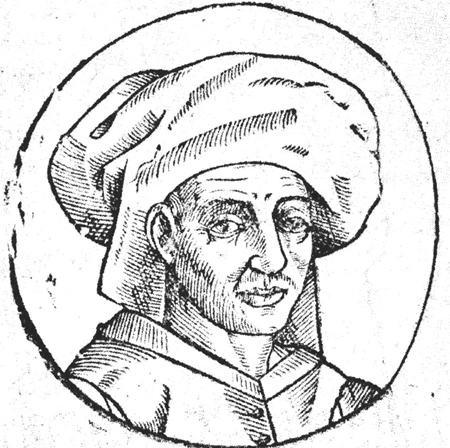At the watering hole the other night, someone was saying that medieval music seems to have a rather unworldly quality and a sense of purity. This perhaps is probably an over-simplification but I know exactly what they mean. Much of the music composed between 1400 and 1500 was invariably for voices and intended for religious purposes. In those days music was simpler harmonically than that of the nineteenth and twentieth century but amazingly it still has the ability to speak to us over a historical chasm of more than five hundred years.

The church took it upon itself to record music in written form and without these laboriously-copied manuscripts, we’d have little idea of what medieval music actually sounded like. On reflection, it’s surprising that so much medieval music has been preserved, though what survives today must be a tiny proportion of what once existed.
But it was not only the church that took on the responsibility of preserving musical compositions. The so-called Old Hall Manuscript for example, is the largest and most significant source of English sacred music of the late medieval period and early renaissance. The manuscript contains 148 compositions written on red staves by different copyists, some possibly by the composers themselves. The book is a large format and while some pages are plain musical notation others are richly and colourfully decorated. It’s thought that the work took about twenty years to complete and contains sacred music by some of the best-known English composers of the day.
Leonel Power (1370-1445): Beata progenies. Ensemble Ligeriana dir. Katia Caré (Duration: 04:17; Video: 1090p HD)
One of them was Leonel Power about whom we know precious little, except that he was probably a native of Kent in South East England. In those days English spelling was more chaotic than it is today and his first name has appeared as Lionel, Lyonel, Leonellus and even sometimes Leonelle.
For a time Power worked as a choral teacher at the household chapel of Thomas of Lancaster, 1st Duke of Clarence. He then served until the end of his days as choirmaster at the Christ Church Priory in Canterbury by which time he was already a big name in English music.
The beautifully lyrical and haunting motet Beata progenies is for three vocal parts (performed here with two singers to a part) and was linked to the immaculate conception of Mary which the church celebrated on 8th December. Power uses remarkably rich and expressive harmonies to underline the meaning of the text.
On this video, there’s also a bonus performance: an anonymous motet entitled Ave Regina Celorum which dates from sometime during the 14th century. The details of its origin and author remain mysteriously unknown.
Josquin des Prez (c.1450-1521): Ave Maria…Virgo Serena. Schola Antiqua of Chicago, dir. Michael Alan Anderson (Duration: 05:34; Video: 720p HD)
Ave Maria…Virgo Serena is considered Josquin’s most famous motet and one of the most well-known choral works of the time. In 1502 it appeared as the opening number in the first volume of motets ever printed. It’s far removed from Leonel Power’s musical language and the beginning, in which the voices imitate each other, was revolutionary at the time.
Josquin des Prez (usually known simply as Josquin) was a Franco-Flemish composer who acquired a reputation as the greatest of his day. Even Martin Luther wrote about his fame and some notable theorists considered that his style represented musical perfection. Many anonymous compositions were attributed to him in the hope of increasing their sales.
Surprisingly, for someone so famous his biography, especially his early years is somewhat vague and we know pretty well nothing about him as an individual. He lived during what must have been an exciting time, for it was a transitional stage in music history and styles were changing rapidly. This was partly due to the increasing mobility of composers and musicians around Europe.
Ave Maria…Virgo Serena was written at some point between 1476 and 1497 when the composer was in service at the North Italian court at Milan. In many ways this is a remarkable work and reflects the ideals of the Italian Renaissance. Each musical phrase corresponds to a line of text and Josquin uses a great deal of imitation which you can hear clearly, especially near the beginning. Gradually the work enters a realm of contrapuntal complexity and internal aesthetic beauty that must have made it seem modern and exciting to fifteenth century ears.
It’s a motet of classic balance and it’s also a fine early example of using musical techniques to bring expressiveness and colour to the text. Throughout the work the voices interplay between each other and it’s not until the final lines, sung rather like a hymn that they finally blend together as one. The profound religious symbolism of this musical device would not have been lost on contemporary listeners.
 |
 |
 |





